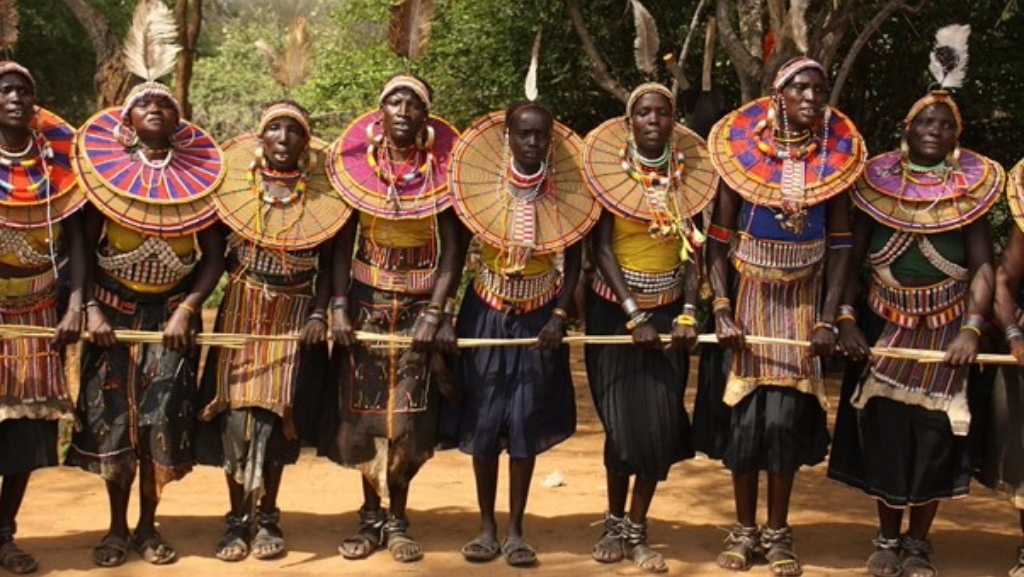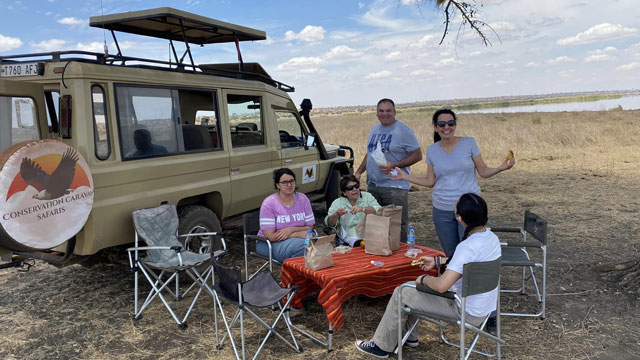
Tanzania, located in East Africa, boasts a population of over 60 million people, with more than 120 ethnic groups. This diverse nation is an evidence to the coexistence of various Tanzania Tribes, each contributing to the country’s cultural wealth.
Here, in this piece, we’ll show you the lives, traditions and unique characteristics of some well-known Tanzania Tribes from Maasai to Hadzabe – all in one frame. And to witness them by your own, we suggest you for the rewarding Tanzania Safari Vacations.
Table of Contents
ToggleThe Maasai: Guardians of Tradition

When you envision Africa, the Maasai Tribe often comes to mind – strolling with their red cloaks and long sticks.
- In Tanzania, their population is estimated to be around 800,000, but their presence extends further to the southern region of Kenya.
- You can encounter them easily during your Safari Vacations In Tanzania, especially around major Tanzania National Parks like Serengeti National Park and the Ngorongoro Crater Conservation Area.
History:
The Maasai, one of the most iconic Tribes In Tanzania, have a history rooted in the Great Rift Valley. Nomadic by nature, they have traversed the East African landscape for centuries, resisting assimilation and maintaining their distinct identity.
Culture:
Known for their vibrant red attire, intricate beadwork, and tall, slender stature, the Maasai are instantly recognizable. Cattle play a central role in their society, symbolizing wealth and status.
Known for:
So, What Is The Maasai Tribe Known For? Well, they are renowned for their unwavering commitment to preserving their traditional way of life. Despite modern influences, they maintain a deep connection to the land and their cattle.
The Chaga: Cultivators of the Highlands

The Chagga Tribe is a sizable community, with approximately 2 million members. They inhabit the southern and eastern slopes of Kilimanjaro and primarily converse in Chaga or Kichagga.
- As the third-largest Ethnic Group In Tanzania, the Chagga are predominantly farmers, cultivating crops like millet, bananas, and coffee to sustain their livelihoods.Top of Form
History:
Culture:
With a matriarchal social structure, the Chaga are known for their intricate banana beer-making process and vibrant dances. Their elaborate initiation ceremonies mark significant life transitions.
Known for:
The Chaga’s agricultural expertise and sustainable farming methods have played a vital role in shaping the landscape around Kilimanjaro National Park. They are also recognized for their vibrant cultural expressions.
Hadzabe Tribe: Guardians of Hunter-Gatherer Traditions
The Hadzabe Tribes are a tiny tribe, numbering between 1,200 to 1,300 individuals. They represent a rare breed – a small, hunter-gatherer tribe and one of the last remaining in the world.
- What makes them stand out among other Tribes In Tanzania isn’t the likelihood of meeting them, but rather their unique language.
- Their communication involves the distinct clicking sounds we mentioned earlier, setting their language apart from any spoken in the surrounding regions.
History:
Residing in the Central Regions Of Tanzania, the Hadza people represent one of the last remaining hunter-gatherer tribes in Africa. Their history dates back to a time when human societies relied on hunting and gathering for survival.
Culture:
The Hadza maintain a simple yet sophisticated culture, relying on oral traditions. Their language, distinctive for its clicks, and the art of bow and arrow hunting are central to their identity.
Known for:
The Hadza are known for preserving the hunter-gatherer way of life in the modern world. Their skills in tracking wildlife, crafting tools, and living in harmony with nature provide valuable insights into a pre-agricultural era.
Sukuma Tribe: Agricultural Stewards
The Sukuma Tribe boasts the largest population, with around 5.5 million members. Geographically, they reside to the North, near Lake Victoria, as illustrated on the map.
- Within the Sukuma community, the Sukuma language is the primary mode of communication.
- Despite their large numbers, many Sukuma people lead a rural lifestyle, and a significant portion adheres to Christianity.
History:
As the largest Ethnic Group Tanzania, the Sukuma people have played a vital role in shaping the country’s agrarian landscape. Their history is intertwined with the vast plains where they cultivate crops.
Culture:
Sukuma culture places a strong emphasis on communal living, particularly during planting and harvesting seasons. Traditional dances, such as the energetic Isukuti, celebrate their cultural identity and express unity within the community.
Known for:
The Sukuma are known for their agricultural expertise, sustaining themselves and contributing significantly to Tanzania Food production. Their resilience and cooperative spirit are evident in their agricultural practices.
The Iraqw: Guardians of Ancient Wisdom
The Iraqw tribe, comprising approximately 350,000 people, calls north-central Tanzania home, specifically in the Arusha Province and Lake Manyara regions.
- A significant portion of the Iraqw population resides on the Mbulu Plateau, situated between Lake Manyara and Lake Eyasi. Notably, when you embark on a Tanzania Safari Vacation, you’ll traverse through Iraqw territory.
- Additionally, the Iraqw tribe holds the distinction of being the first to settle in the Ngorongoro Crater.
History:
The Iraqw people, residing in the highlands of Tanzania, have a history rooted in agriculture and highland living. They have maintained their distinct identity despite interactions with neighbouring tribes.
Culture:
Within their community, men engage in blacksmithing, while women showcase their skills in pottery making. Moreover, their traditional housing and intricate beadwork showcase a commitment to preserving their heritage.
Known for:
The Iraqw are known for their ancient wisdom, expressed through their agricultural practices, spiritual beliefs, and the distinctive design of their homesteads.
Interconnected Threads: Unity in Diversity

Despite the distinctiveness of each Tribe In Tanzania, there exists a remarkable interconnectedness among them.
- The exchange of goods, cultural practices, and even languages is a testament to the dynamic interplay that has shaped Tanzania’s social fabric.
- This unity in diversity not only strengthens the nation but also fosters a sense of collective identity that transcends tribal boundaries.
Preserving Heritage in the Modern Era
In the face of modernization and globalization, Tanzania Tribes grapple with the challenge of preserving their heritage while adapting to the changing world.
- Heading on Tanzania Cultural Tours, you can play a vital role in sustaining the traditions that define each tribe.
Threads of Identity: Tanzania’s Tribes, a Living Cultural Masterpiece
All in all, this exploration of different Tanzania Tribes is like understanding their stories and traditions. Each tribe brings a unique flavor to the mix, showing how diversity is what makes our nation’s heritage so rich and beautiful.
Our invitation is for you to become a part of these stories, and we’d love to share this experience with you through crafting your best-suited Tanzania Safari Vacations. So, why not chat with an expert of Conservation Caravan Safaris?
Related Posts

You Never Expect To Get So Close With Wildlife – Whether It Is Possible In Tanzania?
The allure of witnessing majestic animals in their natural habitat is a powerful draw. But just how close can you get to these wild creatures? We'll show you the possibilities of having up-close wildl…
Read More
Your Private Guided Safari in Tanzania – 4 Reasons to Choose
In the sprawling savannahs and diverse ecosystems, travellers are presented with a unique opportunity to fully immerse in the sights, sounds, and sensations – by means of Private Guided Safaris in T…
Read More



















No Comments